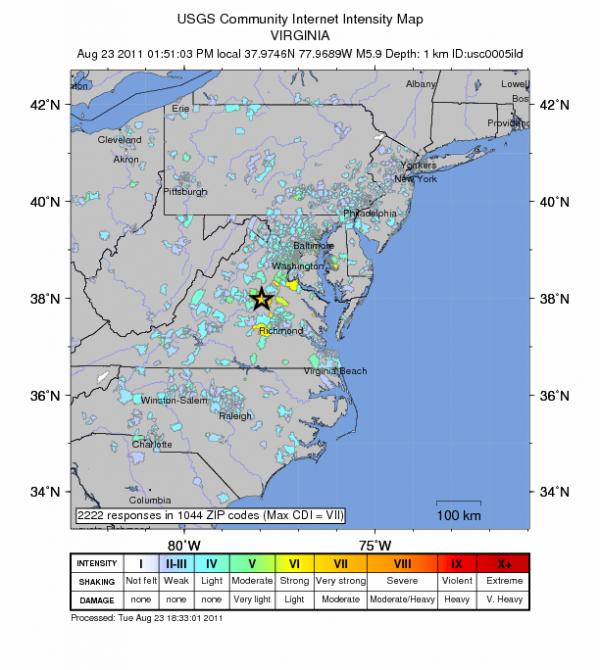Flights Take Off to Find 2011 East Coast Quake Fault


Early next week, geologists plan to hunt by air for the fault that triggered the August 2011 earthquake on the East Coast.
The 5.8-magnitude quake, likely felt by more people than any other earthquake in U.S. history, caused extensive damage and was among the largest ever recorded on the East Coast.
The August 23 quake occurred along a buried and previously unknown fault in the Virginia Piedmont. The epicenter was 38 miles (61 kilometers) northwest of Richmond, and the fault ruptured 3 miles (about 5 km) below the surface.
The data collected during the survey will help geoscientists better estimate the region’s likelihood of damaging earthquakes. "We want to learn more about the geology to get an idea of the seismic hazard," said Anji Shah, U.S. Geological Survey research geophysicist and lead scientist of the study. [Infographic: Earthquake Shakes Northeastern US]
"We know where the fault is located because shortly after the earthquake, a number of different groups monitored the aftershocks," Shah told OurAmazingPlanet.com. (There was no surface break during the earthquake.) "But we don't know how big or how long the fault is, or how far away it stretches from the epicenter. We don't know whether or not it reaches the surface."
The USGS contracted with a private company to employ state-of-the-art survey equipment, the kind typically used for mineral or oil exploration. "This is the first time airborne gravity has been used for mapping earthquake hazards in the U.S.," Shah said.
The instruments can peer up to 9 miles (14.5 km) underground, deeper than the 2011 earthquake ruptured. The survey will measure Earth's gravitational and magnetic fields throughout the region. Subtle changes in the fields can indicate where underground faults are located, because different rock types generate slightly different magnetic and gravity fields. "This allows us to find where we have contrasts in different rock types, and if we see such contrasts that might be evidence of a fault," Shah said.
Get the world’s most fascinating discoveries delivered straight to your inbox.
The research team also plans to pin down other faults that caused aftershocks in the days following the August quake. "We are hoping to map out all the faults in this area," Shah said.
The customized airplane is scheduled to start test flights today (July 13) and begin gathering data Tuesday (July 17), Shah said. The USGS is working with state and local officials to coordinate the flight surveys, which may take place at altitudes as low as 400 feet (120 meters). The flights will cover parts of Louisa, Goochland and Fluvanna counties.
The study results will be published online when complete.
This story was provided by OurAmazingPlanet, a sister site to LiveScience.



